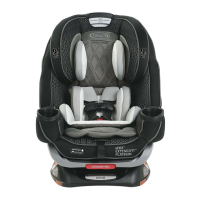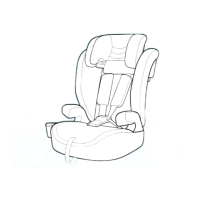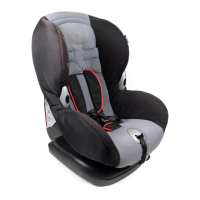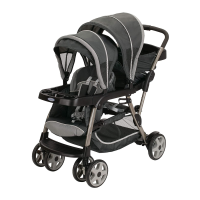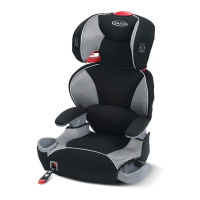34
3-A Rear-Facing
Rear-Facing: 4-50 lb (1.8-22.5 kg)
and whose head is at least 1” (2.5
cm) below the headrest adjustment
handle
• Infants who weigh less than 22 lb (10 kg) MUST
be rear-facing.
• Place car seat rear-facing in the vehicle back
seat.
• Make sure lower anchor attachment or vehicle
seat belt is routed through the rear-facing belt
path marked with a blue label.
• Install this car seat tightly in your vehicle. Car
seat should not move at the
rear-facing belt path more than 1” (2.5 cm)
from side to side, front to back.
• Check recline level making sure the bubble is
within the light blue area.
Vehicle Seat Lap/Shoulder
Belt
• Harness straps need to be even with or just
below the top of child’s shoulders and chest
clip is at armpit level.
• Children are safer riding rear-facing and should
ride rear-facing as long as possible, until they
reach the maximum rear-facing height or
weight rating for their car seat. Then children
should ride forward-facing, using the built-in
harness system for as long as possible until
they reach the maximum forward-facing weight
or height for their car seat. Be sure to check
your local and state laws, as well as AAP and
NHTSA recommendations, for car seat usage.
Lower Anchor Attachment
Do not install by this method
for a child weighing more
than 40 lb (18 kg)
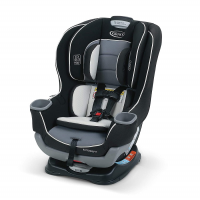
